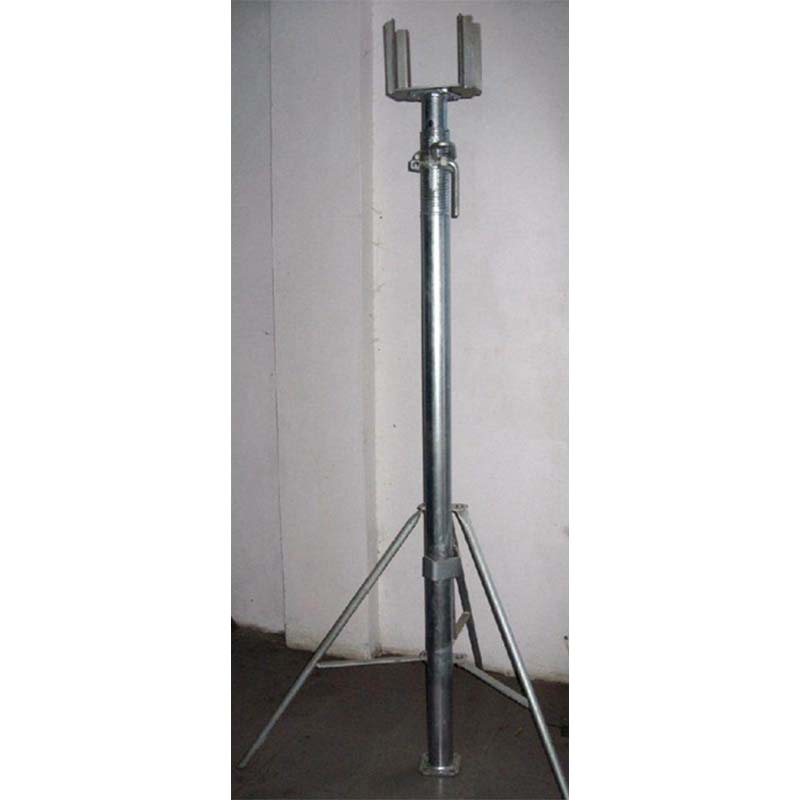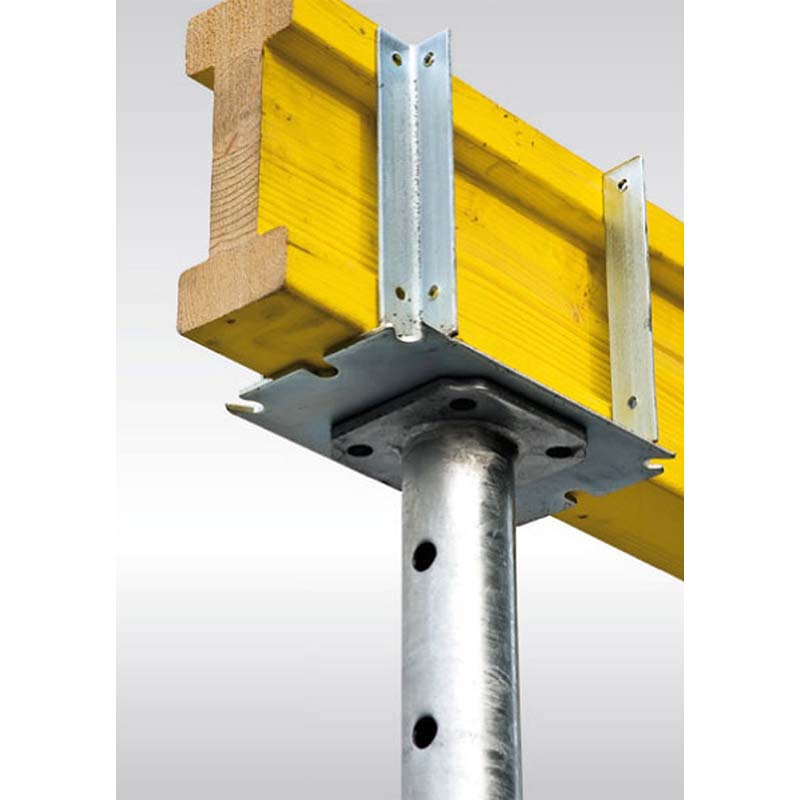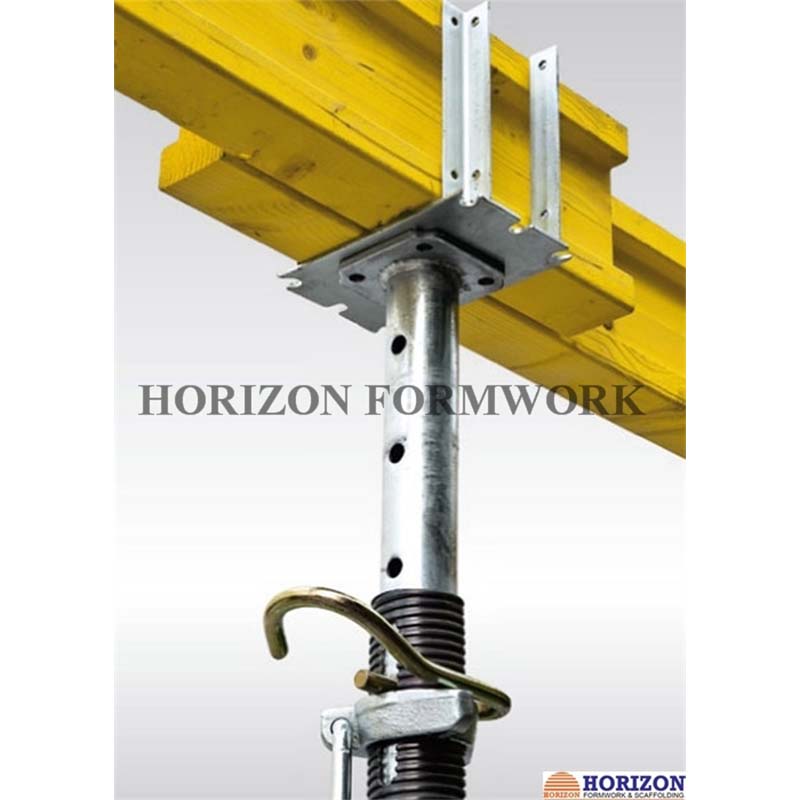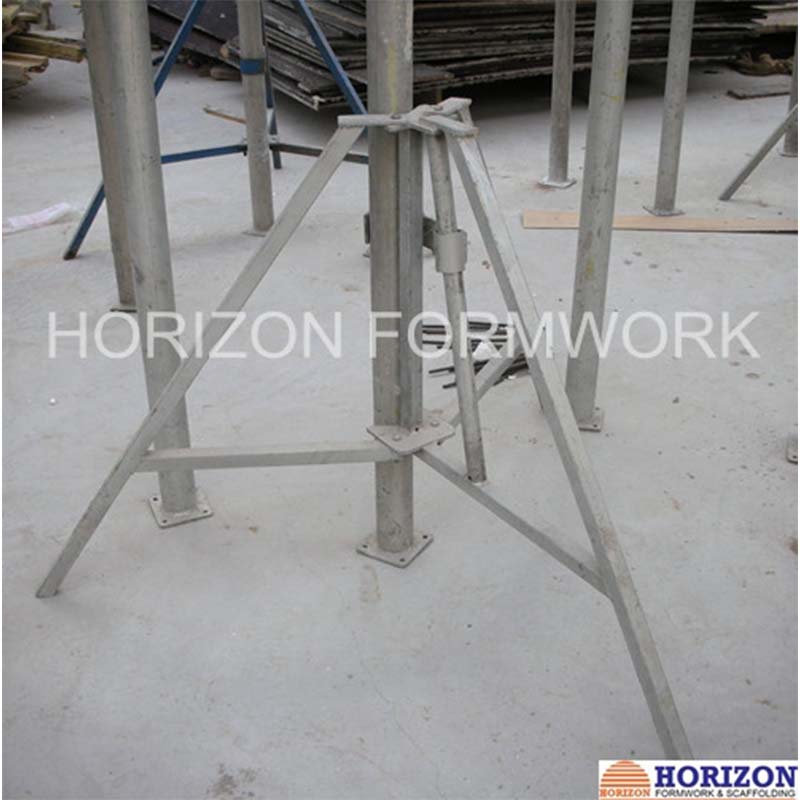Jul . 21, 2025 00:01 Back to list
Heavy Duty Tripod & Fork Head: Stable Camera Mount for Pro Shots
Address: Hustpark Building No. 4, Zhongxing East Street, Xingtai, Hebei, China
Phone: +86 186 1762 1636 | Mobile: +86 319 3188757
Email: sales@horizonform.com | Website: www.horizonform.com
Innovative Tripod & Fork Head Solutions
HORIZON FORMWORK's Tripod & Fork head system represents a significant advancement in slab formwork technology. The folding tripod is designed as an easy and quick erection aid for steel props in slab formwork applications. By utilizing the Tripod & Fork head system, construction teams can significantly improve the stability of high and free-standing floor tables during the erection process.
The Tripod & Fork head components work together to provide stable support for both single and double H20 beams. In the longitudinal configuration, the system accommodates a single beam, while in the lateral orientation, it efficiently supports two beams. This dual-capability provides valuable flexibility during the construction of slab form systems.
View Product DetailsApplications in Modern Construction
The versatility of Tripod & Fork head systems makes them indispensable across multiple construction scenarios. Commercial high-rises benefit significantly from the stability these components provide during slab formation at greater heights. When constructing bridges and viaducts, Tripod & Fork head solutions offer the precise alignment and support required for challenging engineering projects.
Industrial facilities with heavy loading requirements rely on Tripod & Fork head configurations for their superior weight distribution capabilities. Multi-story residential complexes benefit from the rapid installation enabled by Tripod & Fork head technology, helping construction teams meet tight deadlines while maintaining structural integrity. For complex architectural designs that feature irregular shapes and cantilevered elements, the adjustability of Tripod & Fork head systems provides adaptable solutions that maintain safety standards.




Technical Specifications
| Tripod & Fork Head Technical Parameters | |
|---|---|
| Material Composition | High-grade steel (Q345B) |
| Load Capacity (Vertical) | Up to 15 kN per leg |
| Working Height Range | 1.7m - 4.5m |
| Beam Compatibility | Single/Double H20 beams |
| Weight (Standard Tripod) | 8.5 kg |
| Corrosion Resistance | Hot-dip galvanized (80μm) |
| Adjustment Mechanism | Pin-lock system |
| Safety Factor | 4:1 (EN 1065 standard) |
| Fork Head Dimensions | 240×150×120 mm |
| Operational Temperature Range | -20°C to +60°C |
Engineering Advantages
Modern Tripod & Fork head systems incorporate several engineering innovations that enhance their performance. Precision laser cutting ensures all components maintain dimensional accuracy within ±0.5mm tolerance, guaranteeing consistent fit across all elements. The folding mechanism utilized in Horizon's tripod design reduces storage requirements by 60% compared to fixed-leg alternatives.
The load distribution geometry of the Tripod & Fork head system has been optimized through finite element analysis to maximize strength-to-weight ratio. Connection interfaces feature positive-locking mechanisms that prevent accidental disengagement during dynamic loading conditions. The integrated leveling system included in premium Tripod & Fork head configurations enables field adjustments with 3° of freedom, maintaining plumb within 1mm/m tolerance even on uneven surfaces.
Industry Trends and Evolution
The global market for Tripod & Fork head systems is expected to grow at a CAGR of 6.8% from 2023 to 2030 (Global Formwork Market Analysis Report 2023). This growth is driven by increasing adoption in emerging economies and innovations that address sustainability requirements through extended service life and recyclable material choices. Manufacturers are increasingly focusing on modular designs that allow Tripod & Fork head components to integrate with various proprietary systems.
Digital integration is transforming Tripod & Fork head installations through QR-coded components that link to installation guides and load test certifications. Weight optimization without compromising strength remains a key development focus, with recent innovations reducing Tripod & Fork head component mass by 15% while maintaining load capacity. Corrosion protection technologies are advancing beyond standard galvanization to include nano-coatings that extend service life in marine environments.
Tripod & Fork Head Technical FAQ
A: Our Tripod & Fork head systems utilize structural grade steel Q345B conforming to GB/T 1591 standards with minimum yield strength of 345 MPa. All components undergo hot-dip galvanization at 460°C to achieve 80μm zinc coating thickness, providing superior corrosion protection.
A: Our fork heads are rated for 12.5 kN UDL (uniformly distributed load) when supporting two H20 beams in lateral configuration. Maximum point loads are limited to 8 kN with a safety factor of 3.5 as verified through independent testing (CTI-Milano Certification Report FWR-2023-08).
A: Tripod legs must maintain plumb within 1° variance per vertical meter. Base plates should be positioned within 5mm level tolerance across support points. Adjacent Tripod & Fork head systems require spacing accuracy of ±25mm as per EN 12812 formwork execution standards.
A: We recommend functional testing every 50 operating cycles with full disassembly and component inspection every 200 cycles. Pin-lock mechanisms should be lubricated using NLGI Grade 2 lithium grease every 25 uses in standard environments.
A: Critical considerations include: (1) Wind loading exceeding 60 km/h requires additional bracing; (2) Temperature variations beyond -20°C to 60°C necessitate material verification; (3) Chemical exposure from uncured concrete or deicing agents may compromise galvanization.
A: High-capacity Tripod & Fork head models feature 8mm thick leg components instead of 6mm, reinforced pin-lock mechanisms rated at 20kN, and base plates increased to 150×150mm. These enhancements increase vertical load capacity from 10kN to 15kN per leg.
A: Our tripod systems feature dual-stage telescoping with positive pin engagement at minimum 75% overlap. This maintains columnar stability index (CSI) below 0.35L even at maximum extension, preventing buckling under design loads as validated through computer simulation (ANSYS 2022 R2).
Maintenance and Compliance Standards
Proper maintenance of Tripod & Fork head systems ensures long service life and safety compliance. Monthly inspections should verify structural integrity and check for deformation exceeding 1mm per meter. Corrosion affecting more than 10% of surface area requires component replacement to maintain structural certification. Documentation procedures require maintaining logs of all inspections and certifications.
Operational protocols mandate that Tripod & Fork head systems must not be loaded beyond their rated capacity. Periodic load testing should be performed every 24 months. Any modifications to the original design voids certification. Storage recommendations include keeping components dry and covered when not in use to prevent zinc degradation. These practices are essential for maintaining the performance and safety features of your Tripod & Fork head equipment throughout its service life.
"Modern tripod and fork head systems have evolved from simple support components to precision-engineered structural elements that define formwork installation speed and final concrete quality. Proper specification is critical for achieving slab tolerance classes L1/L2 per EN 13670."
- International Journal of Concrete Structures (2023) https://www.ijconcretestructures.org/current-trends-formwork
"Horizon Formwork's integrated tripod systems demonstrated 40% faster deployment times while maintaining 0.7mm deflection limits under 12kN test loads - exceeding European performance benchmarks for temporary works equipment."
- Construction Technology Quarterly Review https://ctqr.org/formwork-systems-innovation/
This is the last article
-
Heavy Duty Tripod & Fork Head: Stable Camera Mount for Pro Shots
NewsJul.21,2025
-
High-Quality U Head Jack Scaffolding – Reliable Scaffolding Jack Head Manufacturer & Factory
NewsJul.08,2025
-
High-Quality I Beam H20 Leading Timber Beam H20 Material Factory, Exporters & Manufacturers
NewsJul.08,2025
-
High-Quality Powder Coating Steel Formwork - Durable & Corrosion Resistant Solutions
NewsJul.07,2025
-
Inclined Column Formwork Supplier – Durable & Precise Solutions for Unique Structures
NewsJul.07,2025
-
High-Quality Water Stop Solutions Trusted Water Stop Company & Suppliers
NewsJul.07,2025